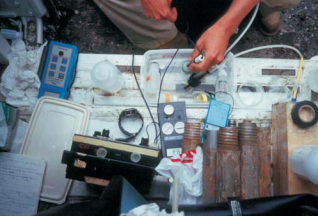
Overview
Groundwater impacted with chlorinated ethenes were flowing onto the Site at concentrations greater than the applicable Standards. The concentrations of the compounds of concern were:
- PCE (maximum concentration of 450 μg/L)
- TCE (maximum concentration of 80 μg/L)
- cis 1,2- DCE (maximum concentration of 586 μg/L)
- Vinyl chloride (maximum concentration of 17 μg/L)
Vertex was requested to implement a cost-effective program to mitigate the impacts flowing onto the Site that was passive and required little to no maintenance and operation. Excavation was not an option due to the depth of the plume, and presence of utilities and buildings.
Scope of Work
- Acquired all relevant permits to complete the remediation program.
- Designed and optimized an in- program to maximize treatment efficiencies.
- Implemented a program that minimized capital expenditures and infrastructure.
- Monitored pre- and post-injection treatment parameters.
The Vertex Approach
- Reductive dechlorination
- Reactive curtain installed along property boundary
- Injections under moderate pressure
- Injection of multiple reactive compounds
- > 225 kg of EHC
- > 80 kg of EHC-A
- Injections completed using a combination of injection wells and direct push injection points
Outcome
- Successful installation of a reactive zone via injection
- Reductive dechlorination conditions created:
- Hydrogen present
- Redox decreased > 250 mV within one week
- pH remained neutral

